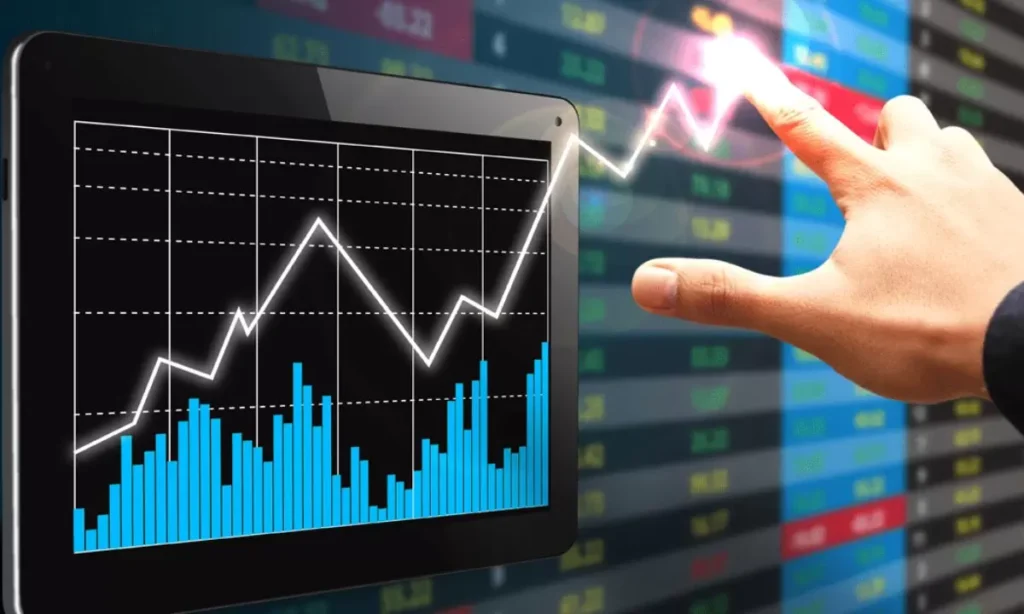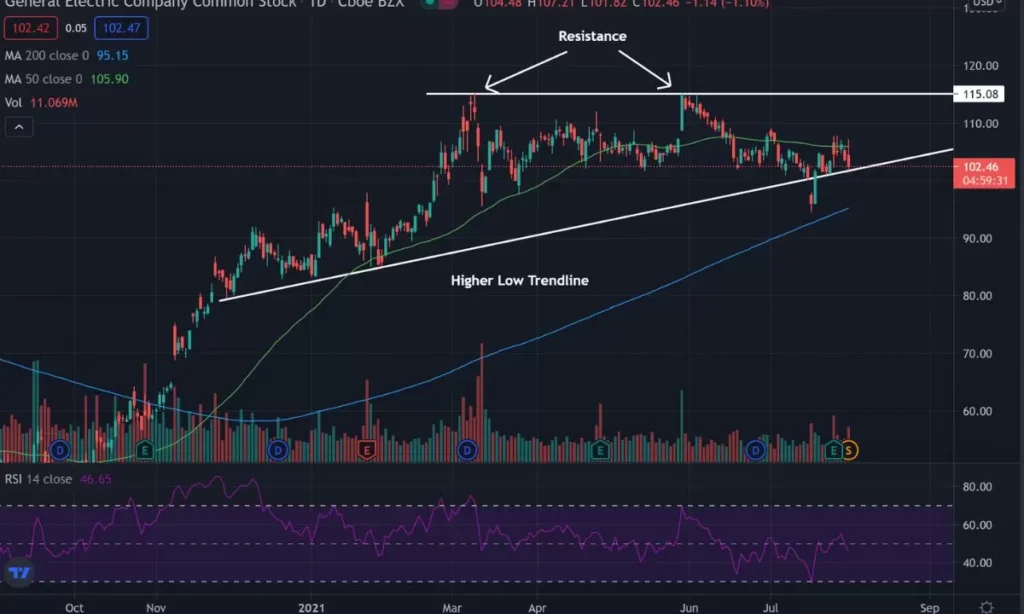Fintechzoom provides financial technology services and solutions. They help many businesses and individuals with their banking and investing needs. The company works to make financial services more accessible and affordable for everyone. Fintechzoom continues to grow and develop new products to meet the changing needs of customers. Their stock value has increased over the past year as the fintech industry expands rapidly.
Fintechzoom builds many partnerships with other financial institutions and companies. They collaborate to share technologies, services, and clients. Through these partnerships, Fintechzoom can expand its reach and offer even more options to more customers worldwide. Investors seem confident in Fintechzoom’s ability to innovate and adapt. The future looks bright as financial technology progressively impacts more lives globally.
Key Takeaways about Fintechzoom Ge Stock
- Fintechzoom is a top platform for researching stocks like GE, it provides key metrics, financials, news, and powerful analysis tools.
- GE is a massive conglomerate operating across diverse sectors like aviation, healthcare, renewable energy, and more. This wide scope offers stability but also complexity.
- Important metrics for understanding GE include its market cap, P/E ratio, dividend yield, and segment performances in areas such as aviation, renewable energy, etc.
- Analyst perspectives provide valuable insights into GE’s strategic direction under new leadership and potential growth opportunities in expanding industries.
- GE’s financial performance is stabilizing after a multi year restructuring, with profits and cash flow improving as it streamlines operations.
- Fintechzoom allows investors to strategically time entry and exit points for GE with tools like advanced stock screening and virtual portfolios.
- Overall GE seems well positioned for steady long term growth if macro conditions remain supportive and transformation is smoothly executed.
Understanding the Basics of GE Stock

GE stock represents ownership in General Electric, one of the largest industrial companies in the world. GE operates in many industries like aviation, healthcare, renewable energy, and more. Investing in GE stock means owning a small part of this large multinational business. Investors need to understand some key metrics about GE to analyze the company and investment.
Key Financial Metrics and Their Significance
Several important numbers give insights into how GE is performing as a company. Revenue tells how much money GE makes from its operations. Profit shows how much money is left after expenses.
Assets are what GE owns that is valuable, like equipment and buildings. Debts are amounts that GE owes to banks and bondholders. Cash flow indicates how much real cash is generated. Understanding these numbers over time helps gauge if the business is growing and financially stable.
Market Capitalization
Market capitalization, or market cap, shows how much total value the public stock market has given to GE. It is calculated by multiplying the current stock share price by the number of shares outstanding. A high market cap signifies that many investors collectively believe GE is quite valuable as a large company. Market cap fluctuates daily based on the stock’s performance and can impact how GE can raise additional funding if needed.
Price to Earnings (P/E) Ratio
The P/E ratio compares GE’s stock price to its annual earnings per share. It indicates if the stock seems overvalued or undervalued based on historical norms. A lower P/E could suggest the stock is cheap, but future earnings may not grow much.
A higher P/E may point to high growth expected later on. Comparing GE’s P/E to competitors and the overall stock market average shows if it trades at a premium or discount relative to its industry. The ratio gives context for analyzing the stock’s valuation.
Dividend Yield
The dividend yield is the percentage of the stock price that GE pays to shareholders each year as a dividend. GE has regularly paid dividends for many decades. A higher yield means more return in dividends. It attracts some long term dividend seeking investors.
Changes in GE’s dividend payments over time also affect the stock price’s performance. Monitoring the yield helps evaluate GE as an income stock investment. Understanding these metrics is key for comprehending GE stock.
Recent Performance of GE Stock

Investing in a large, well known company like GE seemed quite stable for many years. However, its stock price has been volatile lately. Let’s review how GE has been performing recently and what factors drove changes in its value. Understanding its history will help investors predict what may come next.
Overview of Stock Trends
At the start of 2022, GE stock traded around $90 per share. It then dropped below $60 by May due to war concerns and recession fears. The price rose back over $70 in July as business improved.
But global worries again pushed it lower by October to near $70. This back and forth reflects industry challenges and uncertain times that influence large investors’ behaviors. GE works to adjust operations for new trends affecting its lines of work.
Analysis of Price Fluctuations
When quarterly earnings reports showed slowdowns or additional restructuring costs, selling pressure drove the stock down temporarily. Negative headlines weighing on investor sentiment would exacerbate the dips.
Conversely, executive optimism or new partnerships announced led buyers back in, lifting the price temporarily. Near term swings largely depended on reactions to company specific news. Yet major economic changes ultimately drove trends over the past year for GE stock.
Significant Milestones
Some key events reshaped GE’s identity and trajectory. In 2018, it sold controlling stakes in two divisions. The next year, its long time CEO departed as a new leader focused on transformation. Restructuring continued through 2020 to 2021 as revenues declined by billions in some quarters. GE slashed debts through asset sales.
These drastic yet necessary shifts transitioned GE into a smaller, more streamlined company positioned for evolving priorities worldwide. Such milestones punctuate its journey to stability.
Detailed Analysis of GE’s Market Segments

GE operates in multiple industries globally. This wide scope gives it opportunities but also complexities. Let’s examine GE’s major revenue sources and how it leverages synergies between divisions. Understanding these segments is key to assessing GE’s business strategy and potential.
Diverse Portfolio Driving Growth
GE participates in both traditional and emerging sectors. Its aviation, healthcare, and renewable energy divisions address long term needs. Meanwhile, newer additive manufacturing and distributed energy services explore innovation.
This variety lets GE benefit from diverse market cycles. When one area slows, others may accelerate. GE also develops cross segment solutions combining technologies. Such breadth positions it for steady performance over time.
Aviation Sector
GE Aviation powers many commercial and military aircraft worldwide. It supplies jet engines and replacement parts requiring extensive support. Airlines depend on GE to keep fleets operating efficiently.
New engine testing and certifications take years but strengthen GE’s positioning. This stability anchors GE revenues. Yet budgets fluctuate with air travel demands, geopolitics or economic shocks temporarily slowing growth.
Healthcare Technology
GE Healthcare provides medical equipment to hospitals globally. It manufactures imaging machines vital to diagnostics. As populations age, healthcare spending rises steadily. Developing nations also invest more over time. GE addresses these expanding needs while investing in new therapeutics. Healthcare often yields consistent profits despite short term regulation uncertainties.
Energy and Renewable Resources
GE Renewable Energy grows as utilities and governments prioritize sustainable options. It builds offshore wind turbines and grid infrastructure assisting the energy transition. Turbine service contracts generate long term income too.
GE also powers the energy sector through gas and nuclear technologies facing regulatory hurdles. While fossil fuels decline, new energy strategies fuel optimism here long term.
Integration and Synergies
GE combines hardware, software, and services to package specialized solutions across industries. For example, additive manufacturers produce healthcare and aviation parts on the same systems. Common digital platforms connect equipment globally. GE Capital provides financing to customers of all segments. Such coordination optimizes operations and unlocks cross selling opportunities.
Step-by-Step Guide: How to Analyze GE Stock on Fintechzoom?

Fintechzoom is a popular site for researching stocks like GE. This guide outlines the basic process of analyzing GE’s profile and performance on the platform in simple steps. Understanding how to navigate Fintechzoom can help investors effectively evaluate this prominent company.
Step 1: Accessing the Site
First, go to fintechzoom.com and register for a free account. This lets site features track research and watchlists. Type GE in the search bar when logged in. This brings up the GE stock snapshot page with core information and tools. Charts and financials are just a click away for deeper exploration.
Step 2: Analyzing Stock Metrics
Here key stats are shown like the price, market cap, PE ratio, and dividend yield, the same metrics we discussed. Charts visualize the stock’s price history over set timeframes. Look at trends and notable highs or lows. Financials provide income statements and balance sheets to assess fundamentals. Peer comparison puts metrics in context against competitors.
Step 3: Exploring Financial News and Analysis
Newswire updates track headlines impacting GE and its industries. Filter by source and relevance. Analyst ratings summarize investment recommendations. Drill into detailed analyst reports to understand the positive or negative thesis. Earnings estimates forecast expectations, while transcripts offer insight from past conference calls.
Leveraging Tools for Deeper Insight
Other tools include a graph tool to overlay metrics, screeners finding stocks by custom factors, and economic releases relevant to planning. Customized watchlists, virtual portfolios, and custom alerts help manage investment ideas. Search GE filings to view regulatory submissions. Comprehensive yet easy access to equities research empowers smarter investing on Fintechzoom.
Investment Strategies: When to Buy or Sell GE Stock

Making wise entry and exit decisions requires evaluating multiple factors. This article outlines strategic considerations and tools for timing trades of GE stock for favorable outcomes. Proper planning creates opportunities while mitigating risks.
Timing the Market for Optimal Results
It is difficult to predict short term price movements exactly. However, understanding cycles and catalysts provides guidance. GE typically rises after positive earnings but may dip on guidance cuts. Also, watch for macro changes like interest rate hikes. Timing purchases around temporary dips and solid news can yield better average costs over time.
Buying Strategies
For entry points, consider adding to positions on select 2% to 5% pullbacks or after a quarter of solid results and outlook. Dollar cost averaging by investing the same sum regularly smooths out volatility. The site’s graph tool highlights buying ranges under moving averages. Set a price or technical alert through the watchlist for quick notification of opportunities.
Selling Strategies
Set target prices for partial or full exits based on technical levels or fundamental changes. Trim holdings into rallies over 10% above the 50 day average. Completely sold on a 20% surge from the low or if catalysts shift materially. Take profits before upcoming uncertainty like elections to mitigate the potential downside.
Utilizing Fintechzoom Tools for Strategic Decisions
Customized screening finds bargain stocks post sell offs. Analyst ratings/notes flag divergences signaling research. Economic release schedules help foresee volatility windows to trade around. Virtual portfolios backtest strategies. Paper trading practices fine tune processes before committing real money. Comprehensive yet simple tools optimize each phase of strategic long term investing.
Expert Opinions and Future Outlook

Let’s explore what analysts and experts see ahead for GE based on its strategic moves and potential industry shifts. Their perspectives offer valuable inputs for investors to consider regarding this prominent company.
Insights from Market Analysts
Many analysts note GE operates in historically steady sectors like aviation that anchor revenues. However, some see execution risks as they streamline. Most believe further shedding noncore assets boosts focus though costs are involved. Ratings range from neutral to buys, showing mixed confidence pending clear growth acceleration.
Analysts Views on GE’s Strategic Direction
Some praise GE’s strategy to progress healthcare innovations and renewable energy dominating these expanding industries. However, others question profits as new technologies mature. Divesting GE Capital to pare debt receives approval but its meaning for the parent company varies between bullish and cautious stances. Consensus is stability depends on leadership delivering transformation smoothly.
Future Market Trends
Longer term, industries like aviation and healthcare constantly evolve. Demographic and environmental changes ensure renewable energy solutions remain crucial globally. New additive manufacturing applications boost many sectors. So GE’s positioning across these expanding, interlinked industries attracts optimism if navigated properly. Nonetheless, macroeconomic unpredictability leaves the outlook uncertain.
FintechZoom’s Business Model
FintechZoom operates an online platform for comprehensive financial data, news, and research. It generates revenues through paid premium subscriptions, advertising, and affiliate programs. The site reinvests extensively by adding more resources, tools and brokerage services to become users’ primary destination. This flywheel model empowers investors through valuable insights while driving sustainable growth.
Financial Performance

Let’s review GE’s key financial metrics to evaluate its business health. Understanding performance trends provides important context around this large multinational company.
Revenue Growth
GE generated $74 billion in revenues in 2021, down from $79 billion in 2020 due to divestments. However, organic growth returned across aviation, healthcare, and renewable energy. Multi year turnaround remains underway as it stabilizes at a smaller scale focused on innovation. Top line expansion seems likely to resume gradually.
Profitability
Profits fluctuated as GE restructured but margins improved in 2021. It cut costs extensively while divesting unprofitable assets. New management intensely focuses on efficiency and synergies. Near term profitability depends on macro stability though strategic actions position GE to hopefully attain steadier profits ahead.
Cash Flow and Balance Sheet
GE enhanced its balance sheet significantly by reducing debts mainly through asset sales. It boasts a strong liquidity of $17 billion. Positive operating and free cash flows in 2021 reflect the benefits of reorganization. With liabilities contained, GE now intends to balance reinvestments for growth along with shareholder distributions over time.
Competitive Landscape
GE faces strong rivals like Honeywell, United Technologies, and Siemens in core industries. However, its extensive scale and diversification differentiate it for stable long term performance. Many competitors specialize, so GE can integrate capabilities more fully for specific customer solutions. Its installed base and services also create sizable advantages.
Future Prospects and Growth Opportunities

GE is well positioned globally as our world transitions to more sustainable technologies across many sectors. If it executes ongoing strategic changes efficiently while leveraging operational expertise, prospects seem quite positive long term despite present uncertainties. Growing needs ensure opportunities within healthcare, energy and aviation especially.
Risks and Considerations
GE operates in heavily regulated industries exposed to policy/economic impacts beyond its control. Macro volatility and geopolitics introduce short term unpredictability for cash flows and demand. Successful leadership transitions matter. Substantial debt remains, so profit growth must fund priority investments and returns. But GE also possesses considerable resources to mitigate challenges as markets evolve.
FAQ’s
What is FintechZoom’s Dividend Policy?
FintechZoom does not pay a dividend to shareholders.
How does FintechZoom’s Valuation Compare to its Peers?
As a tech startup, FintechZoom’s valuation is rapidly growing but still below many public platform companies of similar scale and growth rates.
What is FintechZoom’s Approach to Environmental, Social and Governance (ESG) Factors?
FintechZoom is committed to operating transparently and considers ESG risks and opportunities in its business decisions.
How does FintechZoom’s Stock Perform During Periods of Market Volatility?
During periods of market instability, FintechZoom’s stock has resisted major downside movements due to its relatively low correlation with broad market indexes.
What is FintechZoom’s Strategy for Talent Acquisition and Retention?
FintechZoom emphasizes an empowering company culture, competitive pay, and career growth to attract and retain the best talent.
Conclusion
In closing, this comprehensive guide aims to explain the essential basics of GE stock and how it can be analyzed on the financial platform Fintechzoom. By understanding metrics like market capitalization, dividends, and sector performance, investors can make informed decisions about including GE in their portfolios.
Fintechzoom offers various tools and resources to research this large multinational company on a user friendly site. Further monitoring of GE’s execution of strategy changes will remain important for forecasting future stock performance.
